
Whitecheeked and yellowfaced... Crater Lakes Rainforest Cottages on the
The white-cheeked honeyeater (Phylidonyris niger) inhabits the east coast and the south-west corner of Australia. It has a large white patch on its cheek, brown eyes, and a yellow panel on its wing. The white-cheeked honeyeater is a medium-sized black and white honeyeater, with a long, sturdy bill that curves downwards.

Whitecheeked Honeyeater eBird
Distinctive honeyeater with clear, large, white cheek patches. Underparts white with black streaking. Back, wings, and head black with yellow panels on tail and wings. Distinguished from similar New Holland Honeyeater by presence of one large white patch on side of face rather than two smaller ones. Endemic to eastern and southwestern Australia; usually found in habitats where heath is present.

Whitecheeked honeyeater Facts, Diet, Habitat & Pictures on Animalia.bio
The White-cheeked Honeyeater (19 cm) has two sub-species, one found in the south-west corner of Australia (the bird-pictured) and the other on the east coast. Lewin's Honeyeater (22 cm) frequents the wetter forests of Australia's eastern coast. They forage for insects in tree bark as well as nectar and fruits.
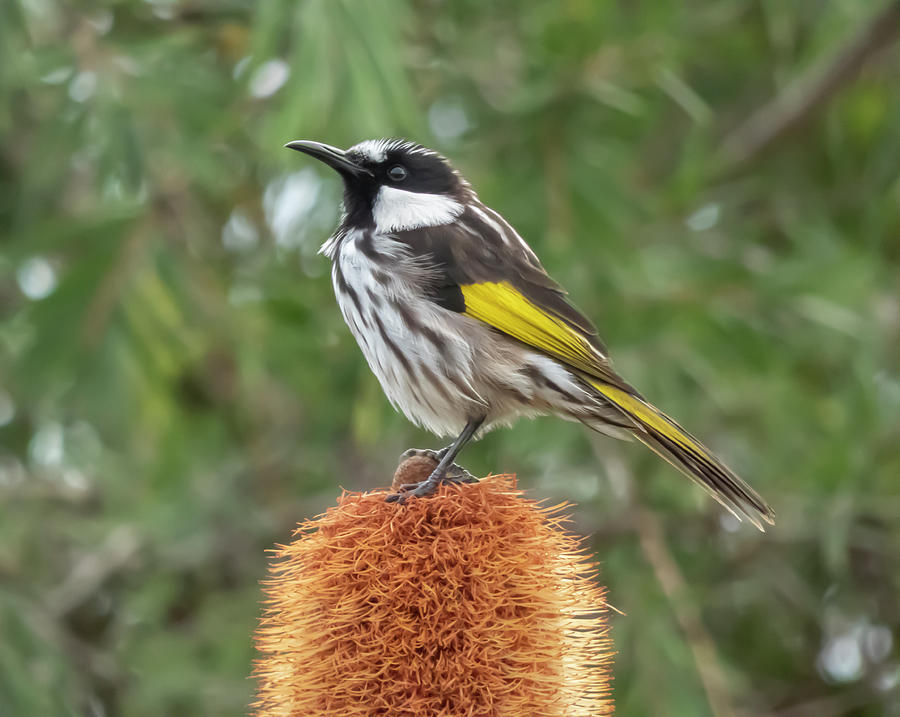
White Cheeked Honeyeater Photograph by Ryan Steptoe Fine Art America
Description[] The white-cheeked honeyeater is a medium-sized black and white honeyeater, with a long, sturdy bill that curves downwards. [2] It has large bright-yellow tail and wing panels, with a large conspicuous white cheek-patch on a mainly black head. [2] [4] The eye is dark brown and it has a long, tapering, white brow-line. [5]
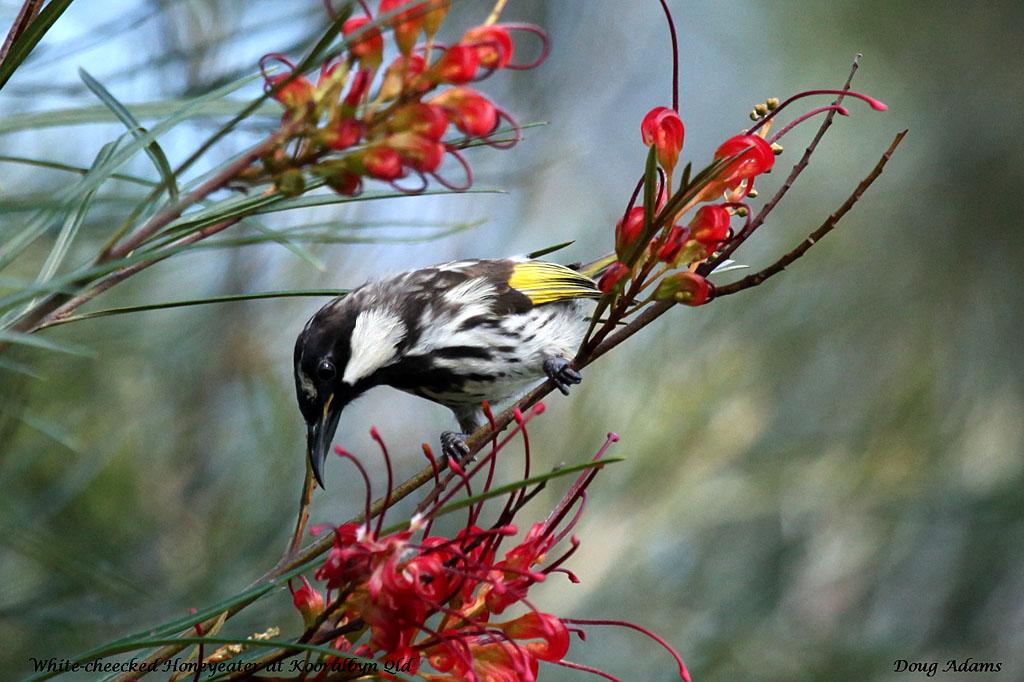
Species profile Environment, land and water Queensland Government
White-cheeked Honeyeater Phylidonyris niger. 1. Summary 2. The White-cheeked Honeyeater (Phylidonyris niger) inhabits the east coast and the south-west corner of Australia. It has a large white patch on its cheek, a brown eye, and a yellow panel on its wing. Sources and Credits
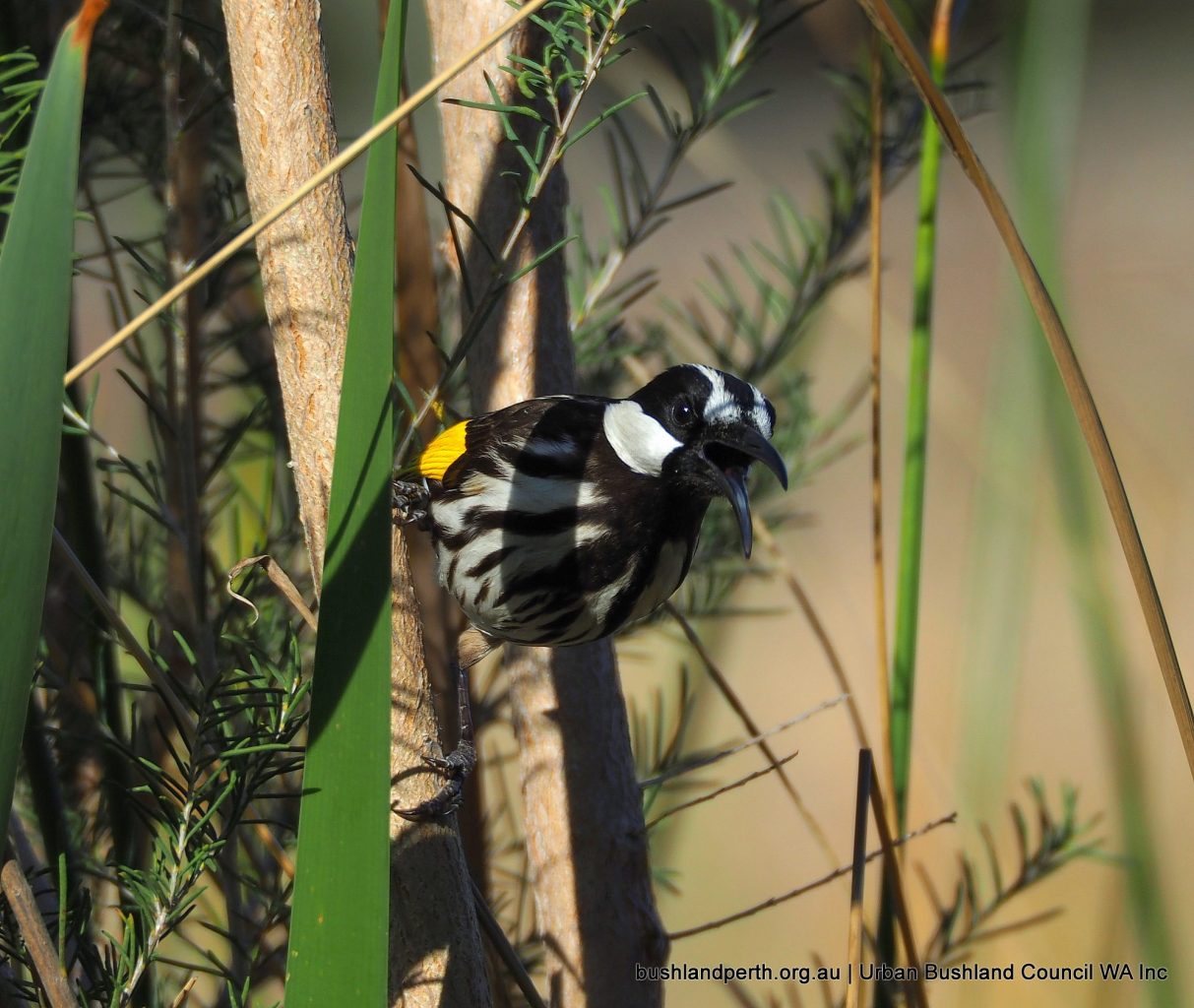
Baigup Wetlands Urban Bushland Council WA
A pair of White-cheeked Honeyeaters (Phylidonyris niger) visited the flowering trees at Crater Lakes Rainforest Cottages. They sang loudly and aggressively c.

Whitecheeked Honeyeater The Australian Museum
Taxonomy. The white-cheeked honeyeater was described by Bechstein in 1811. Two subspecies are recognised: Phylidonyris niger niger in eastern Australia; and P. n. gouldii (Schlegel, 1872) in southwest Western Australia. The latter subspecies has a narrower white cheek-patch, slightly more black on the breast, and different vocalizations, which in future may lead to its classification as a.

Whitecheeked and yellowfaced... Crater Lakes Rainforest Cottages on the
The White-cheeked Honeyeater is a black and white honeyeater, with a long bill that curves downwards. It has large bright yellow tail and yellow panels on the wings. The head is black with white cheek patch. Young birds are duller with brownish plumage. Size 16-18cm Habitat moist heathlands, wetlands, forests, woodlands with a heath understorey.

Whitecheeked Honeyeater (Western Australia Birds) · iNaturalist
White-cheeked Honeyeater - The Australian Museum. The Australian Museum respects and acknowledges the Gadigal people as the First Peoples and Traditional Custodians of the land and waterways on which the Museum stands. We pay our respect to Aboriginal Elders and recognise their continuous connection to Country. This website may contain names.
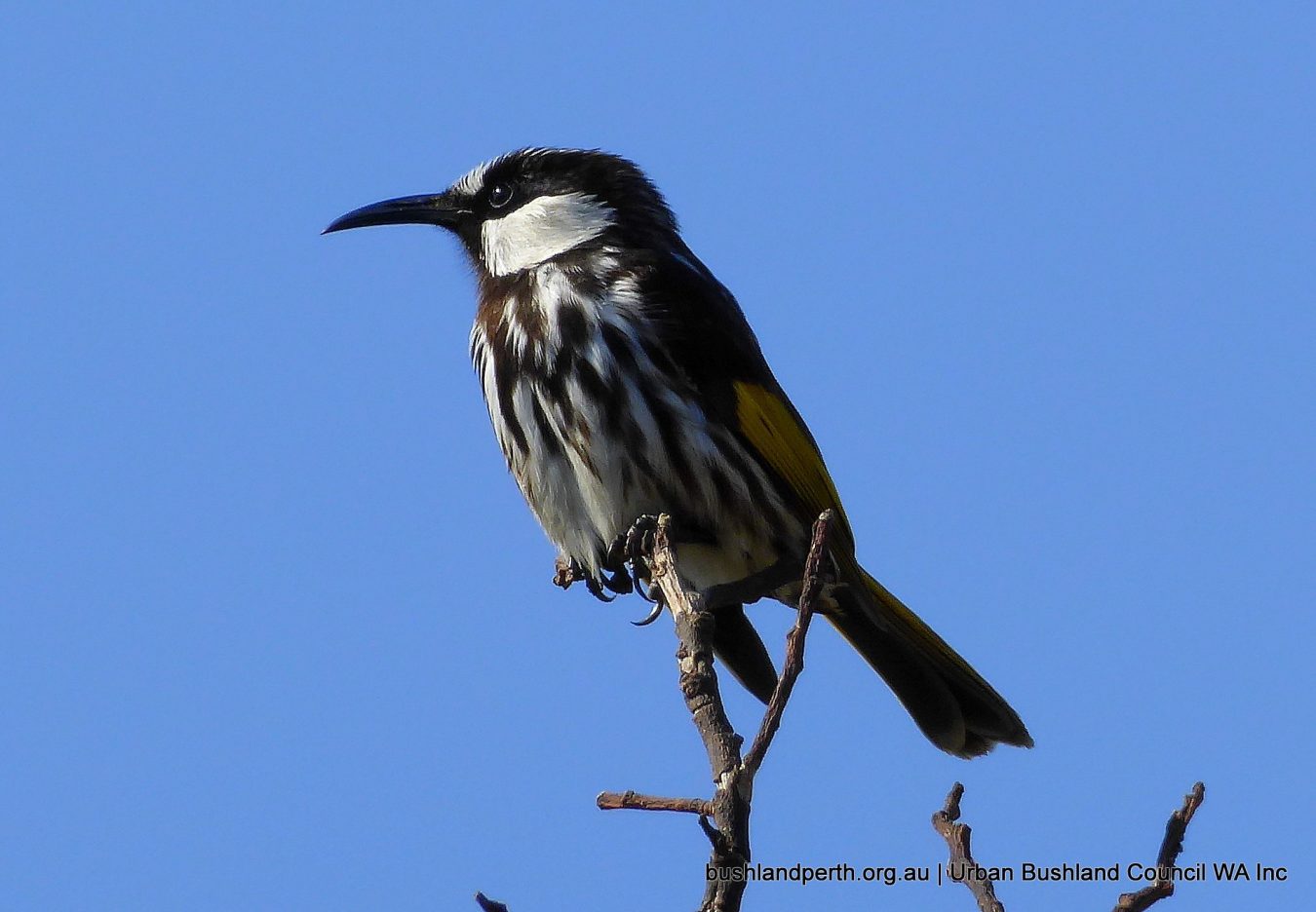
Our Fantastic Bushland Birds Urban Bushland Council WA
The white-cheeked honeyeater is a medium-sized black and white honeyeater, with a long, sturdy bill that curves downwards. It has large bright-yellow tail and wing panels, with a large conspicuous white cheek-patch on a mainly black head. The eye is dark brown and it has a long, tapering, white brow-line. Young birds have a yellow gape and brow.
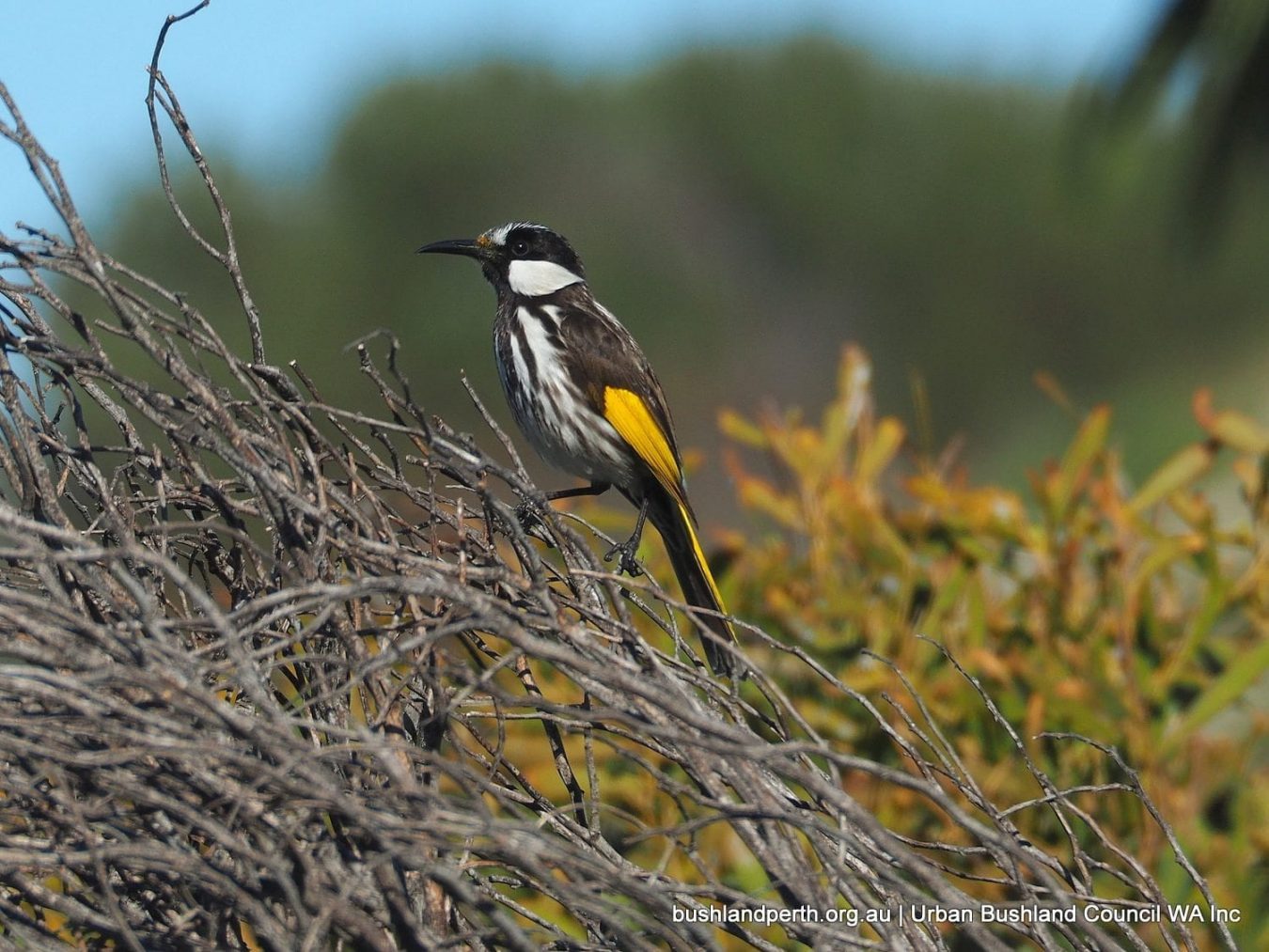
Friends of Lightning Swamp Urban Bushland Council WA
Although they look very similar, there is not much competition between White-cheeked and New Holland Honeyeaters, as they choose different perching sites and have different nesting seasons. A medium-sized black and white honeyeater. It has large bright yellow tail and wing panels, with a large conspicuous white cheek patch on a mainly black head.
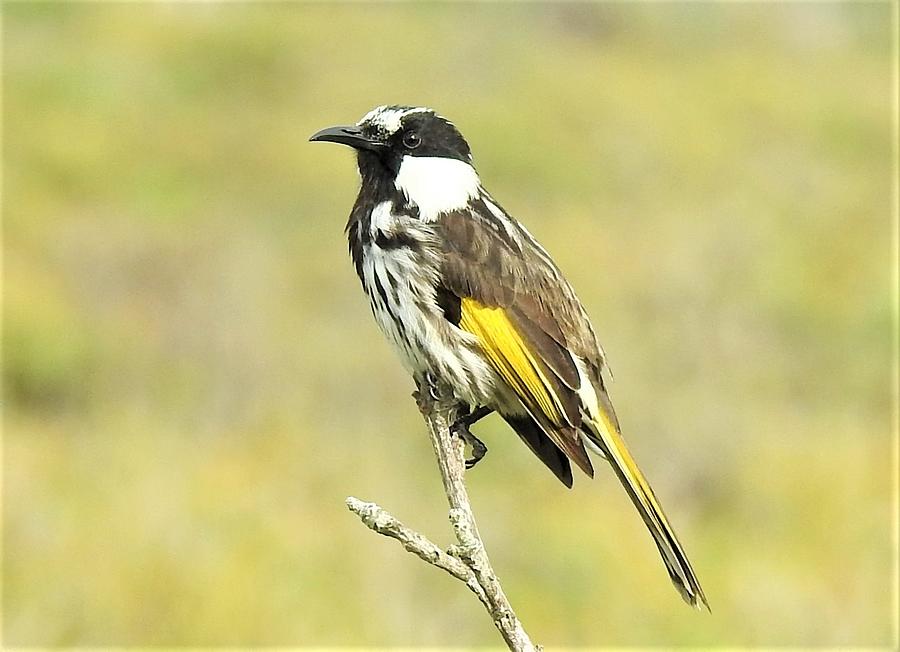
Whitecheeked honey eater 2 Photograph by Athol KLIEVE Fine Art America
The White-cheeked Honeyeater is a medium-sized black and white honeyeater, with a long, sturdy bill that curves downwards. It has large bright yellow tail and wing panels, with a large conspicuous white cheek patch on a mainly black head. The eye is dark brown. Young birds are duller (brownish) and paler with softer, fluffier plumage.

Whitecheeked Honeyeater eBird
The White-cheeked Honeyeater is endemic to eastern and south-western Australia, ranging from east of the Great Divide in Queensland through coastal New South Wales, becoming scattered south to Jervis Bay. Also in south-western Western Australia and from Perth northwards to Murchison River. Mostly resident or sedentary, with some seasonal.

Buy Whitecheeked Honeyeater Image Online Print & Canvas Photos Martin Willis Photographs
Near-frontal view of a White-cheeked Honeyeater (photo courtesy of M. Eaton) [Fraser Island, QLD, September 2018] Near-frontal view of a White-cheeked Honeyeater looking sideways (photo courtesy of M. Fleming) [Arakoon NP, near South West Rocks, NSW, January 2021] Near-lateral view of a White-cheeked Honeyeater looking towards the observer

Whitecheeked Honeyeater The Australian Museum
The white-cheeked honeyeater inhabits the east coast and the south-west corner of Australia. It has a large white patch on its cheek, brown eyes, and a yellow panel on its wing. Source: Wikipedia (0 votes) Photo powered by flickr.com. Classification Order: Passeriformes Family: Meliphagidae Genus:

Whitecheeked Honeyeater Feeding Photograph by Hal Beral Fine Art America
Listen. White-cheeked Honeyeater Phylidonyris niger Scientific name definitions Phylidonyris niger Scientific name definitions